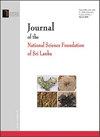分数阶反应扩散方程时间积分的三种记忆选择方法的比较分析
IF 0.4
4区 综合性期刊
Q4 MULTIDISCIPLINARY SCIENCES
Journal of the National Science Foundation of Sri Lanka
Pub Date : 2023-06-30
DOI:10.4038/jnsfsr.v51i2.10777
引用次数: 0
摘要
通过在空间中离散化,可以将非线性时间分数阶反应扩散方程(TFRDE)转化为时间分数阶微分方程(TFDE)系统。全记忆方法(FMM)和短记忆方法(SMM)是用于TFDE的时间积分的公认的记忆选择方法。FMM和SMM的主要缺点分别是计算成本较高和误差不可控。提高SMM精度的唯一方法是增加短内存长度,这会增加计算成本。特别是当我们应用这两种方法来集成TFRDE时,我们必须解决一个大型的TFDE系统。因此,当这两种方法应用于求解TFRDE时,它们的缺点影响很大。本文旨在研究存储器选择方法——指数递减随机存储器方法(EDRMM)的准确性和有效性,并将其与FMM和SMM在集成TFRDE时进行比较。基于这三种记忆选择方法,提出了三种半隐式数值格式,即全记忆半隐式格式(SI-FMM)、短记忆半隐格式(SI-SMM)、,和指数递减随机存储器方法的半隐式格式(SI-EDRMM)),并比较了这三种数值格式的精度和CPU时间(计算时间(CT))。为了进行比较,将这三种数值格式应用于四个精确解已知的TFRDE。数值实验证实,SI-EDRMM的精度和效率都优于SI-SMM,并且SI-EDRMM的效率高于SI-FMM。因此,在TFRDE的集成方面,EDRMM优于SMM和FMM。本文章由计算机程序翻译,如有差异,请以英文原文为准。
Comparative analysis of three memory selection methods for time integration of Fractional Reaction-Diffusion Equations
By discretising in space, a non-linear time fractional reaction-diffusion equations (TFRDEs) can be converted into a system of time-fractional differential equations (TFDEs). The full memory method (FMM) and short memory method (SMM) are well-established memory selection methods used in the time integration of TFDEs. The main drawbacks of FMM and SMM are higher computational cost and uncontrollable error respectively. The only way to increase the accuracy of SMM is by increasing short memory length which causes an increase in computational cost. Especially when we apply these two methods to integrate TFRDEs, we have to solve a large system of TFDEs. Therefore, the drawbacks of these two methods affect seriously, when these are applied to solve TFRDEs. This paper aims to investigate the accuracy and efficiency of the memory selection method, Exponentially Decreasing Random Memory Method (EDRMM), and compare it with FMM and SMM when these methods apply to integrate TFRDEs. Based on these three memory selection methods, three semi-implicit numerical schemes namely semiimplicit scheme with full memory method (SI-FMM), semi-implicit scheme with short memory method (SI-SMM), and semi-implicit scheme with exponentially decreasing random memory method (SI-EDRMM)) are proposed and the accuracy and CPU time (computational time (CT)) of these three numerical schemes are compared. To do this comparison, these three numerical schemes are applied to four TFRDEs whose exact solutions are known. Numerical experiments confirm that the accuracy and efficiency of the SI-EDRMM are better than that of SI-SMM and the efficiency of SI-EDRMM is higher than that of SI-FMM. Therefore, EDRMM is better than SMM and FMM for the integration of TFRDEs.
求助全文
通过发布文献求助,成功后即可免费获取论文全文。
去求助
来源期刊

Journal of the National Science Foundation of Sri Lanka
MULTIDISCIPLINARY SCIENCES-
CiteScore
0.90
自引率
0.00%
发文量
57
审稿时长
>12 weeks
期刊介绍:
The Journal of National Science Foundation of Sri Lanka (JNSF) publishes the results of research in Science and Technology. The journal is released four times a year, in March, June, September and December. This journal contains Research Articles, Reviews, Research Communications and Correspondences.
Manuscripts submitted to the journal are accepted on the understanding that they will be reviewed prior to acceptance and that they have not been submitted for publication elsewhere.
 求助内容:
求助内容: 应助结果提醒方式:
应助结果提醒方式:


